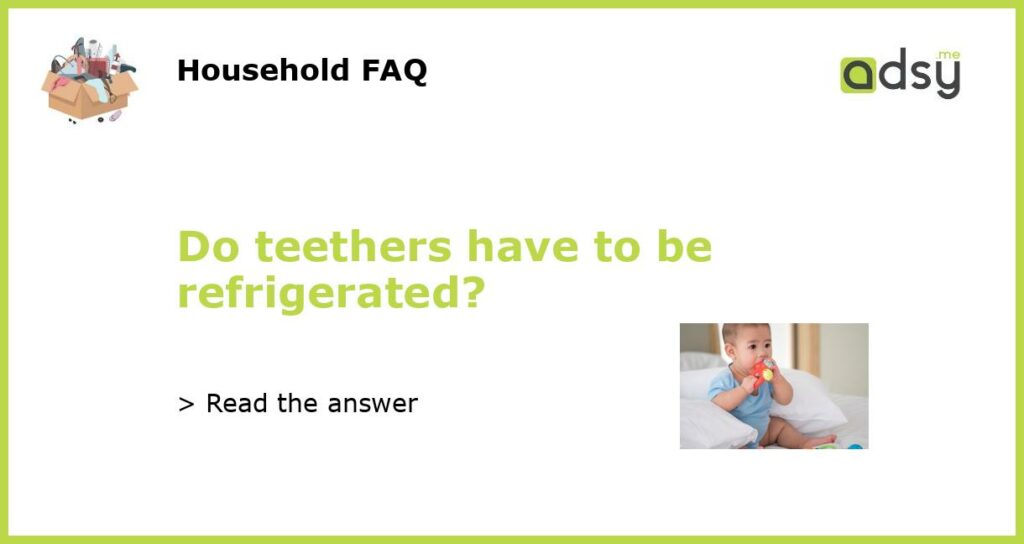What are teethers?
Teethers are devices that are specifically designed to soothe teething babies. They are typically made of soft, flexible materials that provide a safe and gentle surface for babies to chew on. Teethers come in various shapes and forms, including rings, keys, and animal shapes, and are often filled with water or gel to provide a cooling sensation for the gums.
The purpose of refrigerating teethers
Many parents wonder whether teethers need to be refrigerated to be effective. The answer is: it depends. While refrigerating teethers is not a requirement, doing so can provide additional relief for teething babies. Cold temperatures can help numb the gums and reduce inflammation, which can provide comfort for teething infants. The cooling sensation can also distract babies from the discomfort they may be feeling.
When to refrigerate teethers
If you choose to refrigerate teethers, it is important to use caution and follow the manufacturer’s instructions. Not all teethers are designed to be refrigerated, as extreme cold temperatures can damage certain materials. Always check the packaging or consult the manufacturer’s website for specific guidelines. In general, teethers that are specifically designed to be cooled in the refrigerator will have a notice on the packaging or product label.
It is also important to note that refrigerating a teether does not provide long-lasting relief. The cooling effect will diminish over time, and the teether will gradually return to room temperature. Therefore, it is a good idea to have multiple teethers on hand so you can rotate them as needed.
Alternatives to refrigerating teethers
If you prefer not to refrigerate your baby’s teethers, there are other alternatives you can try. Many teethers can be used at room temperature and still provide relief. Consider using teethers made from silicone or rubber, as these materials naturally have some give and flexibility, making them easier for babies to chew on. Some teethers are also designed with textured surfaces to massage the gums and provide extra comfort.
In addition to teethers, there are other methods you can try to soothe your baby’s teething discomfort. For example, you can gently massage your baby’s gums with a clean finger or a damp washcloth. Offering your baby chilled, but not frozen, fruits or vegetables can also provide relief. Just make sure to monitor your baby closely to prevent choking hazards.
In summary, teethers do not have to be refrigerated to be effective. However, refrigerating teethers can provide additional relief by numbing the gums and reducing inflammation. If you choose to refrigerate teethers, make sure to follow the manufacturer’s instructions and use caution. Alternatives to refrigerated teethers include using room temperature teethers made from silicone or rubber, massaging your baby’s gums, and offering chilled fruits or vegetables. Remember to always supervise your baby during teething and consult your pediatrician if you have any concerns.






